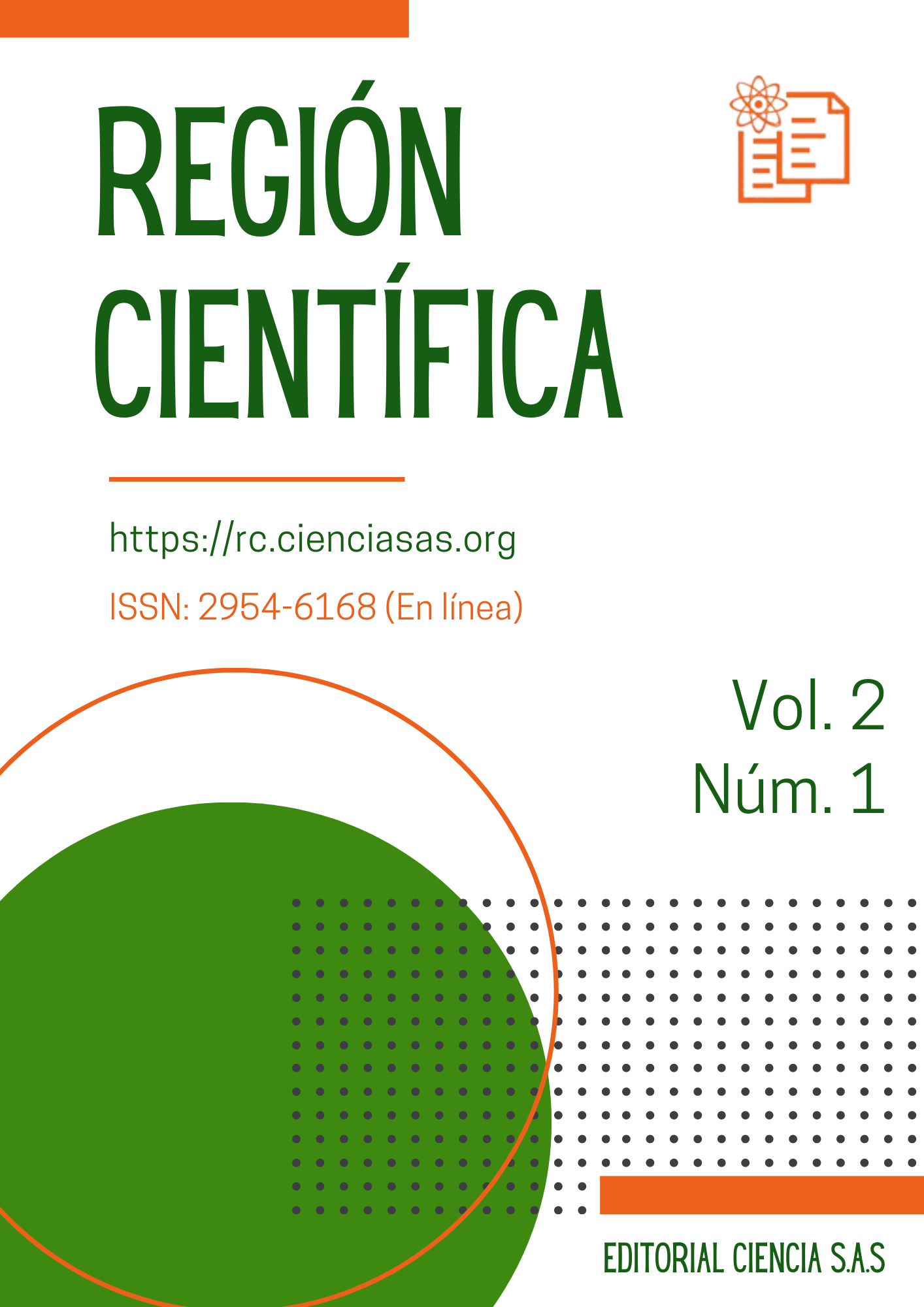History of production and its challenges in the current era
DOI:
https://doi.org/10.58763/rc202315Keywords:
integral operations management, manufacturing management, operations and supply management, lean production, digital transformationAbstract
This qualitative and documentary research analyzes the significant advances that production and operations have had over time, seeking to establish the management approach's progress in each of the historical stages. It is possible to confirm that this has evolved from a perspective focused on manufacturing to a philosophy focused on a comprehensive view of the supply chain. This highlights the main obstacles to facing current challenges and, at the same time, points out the almost hegemonic short-term vision that has characterized production and operations management throughout the 20th century, as opposed to the demand current broader perspective.
Metrics
References
Aguilar-Barceló, J. e Higuera-Cota, F. (2019). Los retos en la gestión de la innovación para América Latina y el Caribe: Un análisis de eficiencia. https://acortar.link/wLdKaA
Ahuja, S., y Chan, Y. (2014). The Enabling Role of IT in Frugal Innovation Completed Research Paper. https://acortar.link/xaB4yz
Autry, C., y Whipple, J. (2013). Special issue on sustainability and resource scarcity. International Journal of Physical Distribution & Logistics Management, 43(5/6). https://doi.org/10.1108/ijpdlm.2013.00543eaa.001
Barber, K., Dewhurst, F., Burns, R. y Rogers, J. (2003). Business‐process modelling and simulation for manufacturing management: A practical way forward. Business Process Management Journal, 9(4), 527–542. https://doi.org/10.1108/14637150310484544
Barney, J. (2001). Resource-based theories of competitive advantage: A ten-year retrospective on the resource-based view. Journal of Management, 27(6), 643–650. https://doi.org/10.1177/014920630102700602
Barrientos, P. (2017). Marketing internet = e-commerce: Oportunidades y desafíos. Revista Finanzas y Política Económica, 9(1), 41-56. https://doi.org/10.14718/revfinanzpolitecon.2017.9.1.3
Bednall, T., Rafferty, A., Shipton, H., Sanders, K., y Jackson, C. (2018). Innovative Behaviour: How Much Transformational Leadership Do You Need? British Journal of Management, 29(4), 796–816. https://doi.org/10.1111/1467-8551.12275
Bessant, J. y Tidd, J. (2007). Innovation and entrepreneurship. John Wiley & Sons.
Bogoviz, A., Lobova, S. y Ragulina, J. (2019). The Cost and Value of Human Capital in the Modern Digital Economy. En E. G. Popkova (Ed.), The Future of the Global Financial System: Downfall or Harmony (pp. 1224–1230). Springer International Publishing.
Bresnen, M. (2017). Being careful what we wish for? Challenges and opportunities afforded through engagement with business and management research. Construction Management and Economics, 35(1–2), 24–34. https://doi.org/10.1080/01446193.2016.1270462
Buchanan, S. y Gibb, F. (2007). The information audit: Role and scope. International Journal of Information Management, 27(3), 159–172. https://doi.org/10.1016/j.ijinfomgt.2007.01.002
Buffa, E. y Sarin, R. (1987). Modern Production/Operations Management. John Willey & Sons. Inc., ABD, 190.
Büyüközkan, G. y Göçer, F. (2018). Digital Supply Chain: Literature review and a proposed framework for future research. Computers in Industry, 97, 157–177. https://doi.org/10.1016/j.compind.2018.02.010
Cárdenas, C., Molina, L., Cancino, G., Villalobos, S. de los S., Anaya, E., Díaz, I. y Ramírez, S. (2021). Utilización de microorganismos para una agricultura sostenible en México: Consideraciones y retos. Revista mexicana de ciencias agrícolas, 12(5), 899–913. https://doi.org/10.29312/remexca.v12i5.2905
Cardona, D., Rada, A., & Palma, H. (2017). Creación de empresa como pilar para el desarrollo social e integral de la región caribe en Colombia: Apuntes críticos. Saber, Ciencia y Libertad, 12(1), 134–143. https://doi.org/10.18041/2382-3240/saber.2017v12n1.698
Chalmers, D., MacKenzie, N. y Carter, S. (2021). Artificial Intelligence and Entrepreneurship: Implications for Venture Creation in the Fourth Industrial Revolution. Entrepreneurship Theory and Practice, 45(5), 1028–1053. https://doi.org/10.1177/1042258720934581
Chase, R. y Aquilano, N. (2008). Operations and Supply Management (10th edition). MacGraw Hill.
Checkland, P. (1995). Model validation in soft systems practice. Systems Research, 12(1), 47–54. https://doi.org/10.1002/sres.3850120108
Colbert, D., Tyndall, I., Roche, B., y Cassidy, S. (2018). Can SMART Training Really Increase Intelligence? A Replication Study. Journal of Behavioral Education, 27(4), 509–531. https://doi.org/10.1007/s10864-018-9302-2
Craig, J., y Yetton, P. (1993). Business Process Redesign: A Critique of Process Innovation by Thomas Davenport as a Case Study in the Literature. Australian Journal of Management, 17(2), 285–306. https://doi.org/10.1177/031289629301700207
Dalkir, K. (2011). Knowledge Management in Theory and Practice. Routledge. https://doi.org/10.4324/9780080547367
Eisenhardt, K. (1989). Agency Theory: An Assessment and Review. Academy of Management Review, 14(1), 57–74. https://doi.org/10.5465/amr.1989.4279003
Fujimoto, T. (1999). The Evolution of a Manufacturing System at Toyota. Oxford University Press.
Granovetter, M. (1992). Economic Institutions as Social Constructions: A Framework for Analysis. Acta Sociologica, 35(1), 3–11. https://doi.org/10.1177/000169939203500101
Gupta, M., y Boyd, L. (2008). Theory of constraints: A theory for operations management. International Journal of Operations & Production Management, 28(10), 991–1012. https://doi.org/10.1108/01443570810903122
Heizer, J., Render, B., y Munson, C. (2017). Operations management: Sustainability and supply chain management (12th edition). Pearson Education.
Hillmer, S., y Karney, D. (1997). Towards understanding the foundations of Deming’s theory of management. Journal of Quality Management, 2(2), 171–189. https://doi.org/10.1016/S1084-8568(97)90002-X
Kaplan, R. y Norton, D. (1996). Strategic learning & the balanced scorecard. Strategy & Leadership, 24(5), 18–24. https://doi.org/10.1108/eb054566
Larsen, M., Manning, S. y Pedersen, T. (2013). Uncovering the hidden costs of offshoring: The interplay of complexity, organizational design, and experience. Strategic Management Journal, 34(5), 533–552. https://doi.org/10.1002/smj.2023
Lawrence, P. y Lorsch, J. (1967). Differentiation and Integration in Complex Organizations. Administrative Science Quarterly, 12(1), 1–47. https://doi.org/10.2307/2391211
Leonard, R. (1995). From Parlor Games to Social Science: Von Neumann, Morgenstern, and the Creation of Game Theory 1928-1944. Journal of Economic Literature, 33(2), 730–761.
Lepadatu, D. y Janoski, T. (2020). Framing and Managing Lean Organizations in the New Economy. Routledge. https://doi.org/10.4324/9781351015158
Meredith, J. y Pilkington, A. (2018). Assessing the exchange of knowledge between operations management and other fields: Some challenges and opportunities. Journal of Operations Management, 60, 47–53. https://doi.org/10.1016/j.jom.2018.05.004
Nicoletti, B. (2020). Procurement 4.0 and the Fourth Industrial Revolution: The Opportunities and Challenges of a Digital World. Springer Nature.
Osborne, S., Radnor, Z. y Strokosch, K. (2016). Co-Production and the Co-Creation of Value in Public Services: A suitable case for treatment? Public Management Review, 18(5), 639–653. https://doi.org/10.1080/14719037.2015.1111927
Payne, J., Payne, J., Bettman, J. y Johnson, E. (1993). The Adaptive Decision Maker. Cambridge University Press.
Pfeffer, J. y Salancik, G.(2003). The External Control of Organizations: A Resource Dependence Perspective. Stanford University Press.
Piercy, N. (2012). Business history and operations management. Business History, 54(2), 154–178. https://doi.org/10.1080/00076791.2011.631121
Pietro, S. y Hamra, P. (2021). Diseñar hoy: Visión y gestión estratégica del diseño. Nobuko.
Porter, M. (1980). Industry Structure and Competitive Strategy: Keys to Profitability. Financial Analysts Journal, 36(4), 30–41. https://doi.org/10.2469/faj.v36.n4.30
Rodríguez, J. (2017). Transformaciones tecnológicas, su impacto en el mercado de trabajo y retos para las políticas del mercado de trabajo. https://repositorio.cepal.org/handle/11362/42612
Rönkkö, E. y Herneoja, A. (2021). Working across Boundaries in Urban Land Use and Services Planning—Building Public Sector Capabilities for Digitalisation. Smart Cities, 4(2), 767–782. https://doi.org/10.3390/smartcities4020039
Russell, K., O’Raghallaigh, P., O’Reilly, P. y Hayes, J. (2018 de septiembre). Business to digital transformation: A proposed framework for achieving business intelligence alignment. Irish Academy of Management Annual Conference 2018. https://cora.ucc.ie/handle/10468/7125
Schaltegger, S. y Burritt, R. (2014). Measuring and managing sustainability performance of supply chains: Review and sustainability supply chain management framework. Supply Chain Management: An International Journal, 19(3), 232–241. https://doi.org/10.1108/SCM-02-2014-0061
Shaw, I. (2021). Ancient Egypt: A Very Short Introduction. Oxford University Press.
Shingo, S. y Robinson, A. (Eds.). (2017). Modern Approaches to Manufacturing Improvement: The Shingo System. Routledge. https://doi.org/10.1201/9780203746745
Silva, A. y Gómez, D. (2018). Inclusión digital y los retos para la innovación educativa en Brasil y Colombia. Revista Iberoamericana de Psicología: Ciencia y Tecnología, 11(3), 81–88. https://doi.org/10.33881/2027-1786.rip.11307
Skinner, W. (1969, mayo 1). Manufacturing—Missing Link in Corporate Strategy. Harvard Business Review. https://hbr.org/1969/05/manufacturing-missing-link-in-corporate-strategy
Suddaby, R. (2010). Challenges for Institutional Theory. Journal of Management Inquiry, 19(1), 14–20. https://doi.org/10.1177/1056492609347564
Tae, C., Luo, X., y Lin, Z. (2020). Capacity-constrained entrepreneurs and their product portfolio size: The response to a platform design change on a Chinese sharing economy platform. Strategic Entrepreneurship Journal, 14(3), 302–328. https://doi.org/10.1002/sej.1360
Valderrama, R. y Tovar, L. (2008). La teoría de la complejidad: Una nueva disciplina multicientífica y sus bases para la aplicación en la administración. Revista Universidad y Empresa, 10(14), 129–154. https://acortar.link/wKsbNp
Valhondo, J., Sáez, F. y Banús, J. (2014). Organización de la producción: Una perspectiva histórica. Reial Acadèmia de Doctors. https://dialnet.unirioja.es/servlet/libro?codigo=761161
Walker, R. (2014). Internal and External Antecedents of Process Innovation: A review and extension. Public Management Review, 16(1), 21–44. https://doi.org/10.1080/14719037.2013.771698
Williams, A., Davidson, J., Waterworth, S. y Partington, R. (2003). Total quality management versus business process re-engineering: A question of degree. Proceedings of the Institution of Mechanical Engineers, Part B: Journal of Engineering Manufacture, 217(1), 1–10. https://doi.org/10.1177/095440540321700101
Williamson, O. (1987). Transaction cost economics: The comparative contracting perspective. Journal of Economic Behavior & Organization, 8(4), 617–625. https://doi.org/10.1016/0167-2681(87)90038-2
Woodward, J. (1981). Industrial Organization: Theory and Practice (Vol. 2). Oxford: Oxford University Press. https://doi.org/10.1177/017084068100200219
Wu, Y., Huatuco, L., Frizelle, G. y Smart, J. (2013). A method for analysing operational complexity in supply chains. Journal of the Operational Research Society, 64(5), 654–667. https://doi.org/10.1057/jors.2012.63
Zapata, G., Mirabal, A. y Hernández, A. (2009). Modelo teórico conceptual de la estructura organizativa: Un análisis contingente. Ciencia y Sociedad, 34(4), 618–640. https://doi.org/10.22206/cys.2009.v34i4.pp618-640
Published
How to Cite
Issue
Section
License
Copyright (c) 2023 Nicolás Afanador Cubillos

This work is licensed under a Creative Commons Attribution-NonCommercial-ShareAlike 4.0 International License.
Este artículo se distribuye bajo la licencia Creative CommonsReconocimiento-NoComercial-CompartirIgual 4.0 Internacional. A menos que se indique lo contrario, el material publicado asociado se distribuye bajo la misma licencia.












